Taking the arba minim (four species) on the Yom Tov of Sukkos is of course a most familiar and cherished aspect of this season. What may not be as familiar, however, is the extent of the richness and depth behind this practice. There are a plethora of botanical species in the world and even in Eretz Yisrael alone. What is it about these four kinds specifically from all of the many in existence that they “merited” to be selected by Hashem for the mitzvah? As we shall see, the Sages have indeed offered much illumination about the profundity underlying this mitzvah.
The Aquatic Angle
There does seem to be an element of practicality in the selection of these specific kinds. Rabbeinu Bechaye (Parshas Emor) points to the fact that the Yom Tov of Sukkos, in many respects, is a water-centered festival. Thus, for example, the libation offered on the mizbei’ach (altar) – usually consisting of wine – at this time came from water. There is good reason for this, as we see from the Mishnah (Rosh Hashanah 1:2), which outlines the various judgment periods throughout the year:
בְּאַרְבָּעָה פְרָקִים הָעוֹלָם נִדּוֹן, בַּפֶּסַח עַל הַתְּבוּאָה, בָּעֲצֶרֶת עַל פֵּרוֹת הָאִילָן, בְּרֹאשׁ הַשָּׁנָה כָּל בָּאֵי הָעוֹלָם עוֹבְרִין לְפָנָיו… וּבֶחָג נִדּוֹנִין עַל הַמָּיִם.
“The world is judged at four junctures throughout the year. During Pesach, judgment is rendered on the produce for that year (i.e., the quality and quantity of the crop is determined at that time); on Shavuos, the judgment concerns the output of fruits of the tree; on Rosh Hashanah, all people pass in review before Hashem’s scrutiny….; and on Sukkos, the world is judged for water (i.e., rain).”
The Gemara (Rosh Hashanah 16a) adds that the particular offering brought during these times corresponds to the nature of the seasonal judgment. For example, the Torah mandates that the Omer offering be brought during the festival of Pesach. This is the time of judgment for produce of the field, and this offering thus consists of barley, a common form of produce. The message thereby is that through this offering, we beseech Hashem to have mercy and confer blessing on the crops of the field. And so it is with Sukkos; as the allotment of rain is being determined from on High, we present an offering of water to Hashem.
This being the case, in any event, Rabbeinu Bechaye sees a manifestation of this idea in the selection of the specific species of lulav (palm), esrog (citron), hadas (myrtle), and aravah (willow). All of these species are highly water-dependent and grow near a water source. Thus, given their aquatic nature, they serve a similar function to that of the nisuch ha’mayim (water libation); that is, their enlistment in the service of Hashem at this time is aimed at securing a favorable judgment in the essential area of water allotment.
Additional Allusions
Now, Chazal themselves reveal some of the deeper implications contained in this mitzvah. The Medrash asserts that these four species correspond to the major aspects of the human body: כָּל עַצְמֹתַי תֹּאמַרְנָה ה’ מִי כָמוֹךָ לֹא נֱאֶמַר פָּסוּק זֶה אֶלָא בִּשְׁבִיל לוּלָב, הַשֶׁדְרָה שֶׁל לוּלָב דוֹמֶה לְשֶׁדְרָה שֶׁל אָדָם וְהָהָדָס דוֹמֶה לְעַיִן וְעַרָבָה דוֹמֶה לְפֶּה וְהָאֶתְרוֹג דוֹמֶה לְלֵב – “ ‘All of my limbs shall say:
Hashem – who can compare to You?’ (Tehillim 35:10). This verse was stated in reference to none other than the four species: The ‘spine’ of the lulav resembles the spine of a person; the hadas resembles the eye; the aravah resembles (the lips of) a mouth; and the esrog resembles the heart” (Vayikra Rabbah 30:14). Rabbeinu Bechaye explains the significance in terms of obtaining kapparah (atonement). These primary organs are responsible for most of man’s functions, including the observance of the commandments – both positive and negative. Having misused these organs by failing to heed certain commandments, a person is able to attain kapparah by presenting these minim – counterparts of his bodily components – in service before Hashem.
Taking a different tack, the classic volume Seder Hayom offers another approach as to the uniqueness of these specific species. The Medrash (Bereishis Rabbah 10:6) discusses the affairs of the various kinds of vegetation, stating that Hashem appoints for each blade of grass a Celestial officer charged with ensuring its growth and development: אֵין לְךָ כֹּל עֵשֶׂב וְעֵשֶׂב שֶׁאֵין לוֹ מַזָל בִּרְקִיעַ שֶׁמַכֶּה אוֹתוֹ וְאוֹמֵר לוֹ גַדֵל – “Each individual grass has its personal emissary from the Firmament, which strikes it and instructs it to grow.” However, asserts the Seder Hayom, from the entire Plant Kingdom there are four exceptions – namely, the arba minim. Rather than being handled by Celestial intermediaries, Hashem Himself oversees and furthers their growth with His direct intervention. Taking these specific types on Sukkos thus serves to demonstrate the special and personalized care Hashem affords His designated people; He does not delegate their affairs to any intermediaries, nor does He allow any other entity – including the Satan – to yield any dominion over them.
Based on a dissertation in the sefer Sifsei Kohein (authored by one of the sainted disciples of the Arizal), we discover yet another facet to this mitzvah, which he understands (focusing primarily on the lulav and esrog) as reflecting the notion of sechar mitzvos (reward for mitzvos). The esrog – referred to by the Torah as the “pri eitz hadar – beautiful fruit of the tree” (Vayikra 23:40) – corresponds to the benefits one may receive even in This World. This is a phenomenon Chazal refer to with the same terminology: אֵלּוּ דְבָרִים שֶׁאָדָם אוֹכֵל פֵּרוֹתֵיהֶן בָּעוֹלָם הַזֶּה וְהַקֶּרֶן קַיֶּמֶת לוֹ לָעוֹלָם הַבָּא – “The following are mitzvos from which a person eats their fruits in This World, while the principal remains for him in the Next World…” (Peah 1:1). The lulav, in any event, embodies the reward that awaits a person in Olam Haba. Thus it is that we find the lulav to be significantly taller than the esrog, reflecting the obvious disparity between the quality of the reward in This World and the Next. The leaves of the lulav themselves differ in their height, laid out in layers of ascending order. This arrangement reflects the fact that in Olam Haba itself there are various levels to which the righteous are privy, in proportion to their deeds. Furthermore, the lulav is held in the right hand – considered the dominant one – while the esrog is taken in the left. This conveys a lesson of priority, demonstrating which world is truly the preferred and primary destination.









